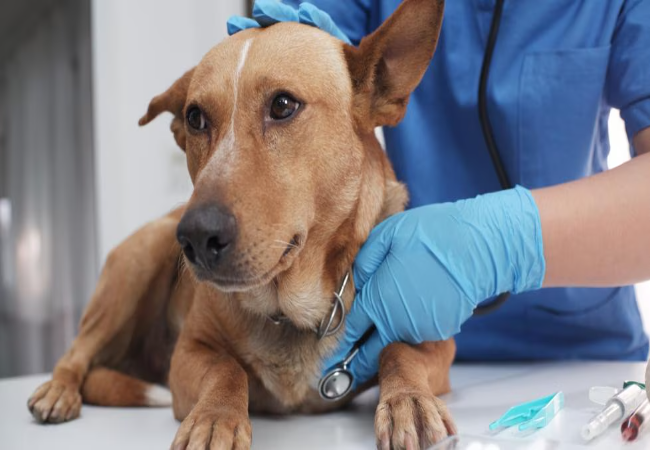Vet Approved Guide to Cholangitis & Cholangiohepatitis in Dogs 2025 🐶🩺

In this article
Vet Approved Guide to Cholangitis & Cholangiohepatitis in Dogs 2025 🐶🩺
By Dr. Duncan Houston BVSc
Cholangitis is inflammation of the bile duct, while cholangiohepatitis extends that inflammation into the gallbladder and surrounding liver tissue. Though uncommon in dogs, these conditions can cause serious liver issues and even be life-threatening if not treated promptly. In this veterinary guide, I’ll walk you through the causes, symptoms, diagnosis, treatment, and long-term management. 💊
📍 Causes & Risk Factors
- Bacterial Infection: Most common cause – gut bacteria like E. coli and Enterococcus ascend the bile ducts
- Obstructive Disease: Gallstones, mucoceles, strictures blocking bile flow
- Immune-Mediated / Viral: Chronic inflammation may persist after infection
- Concurrent Conditions: Pancreatitis, IBD, biliary obstruction often coexist
⚠️ Signs & Clinical Presentation
- Reduced appetite, weight loss, vomiting, diarrhea
- Fever (hyperthermia) and lethargy
- Jaundice (yellow gums, eyes, skin) from bile stasis
- Abdominal pain or ascites (fluid buildup)
🔬 Diagnostic Work‑Up
- Blood Tests: Elevated liver enzymes (ALT/ALP/GGT), hyperbilirubinemia, inflammatory leukogram
- Ultrasound: Assesses liver, gallbladder, bile ducts for sludge, stones, inflammation, ascites
- Biopsy & Culture: Needle, laparoscopic, or surgical sampling of bile and liver tissue to identify the inflammation type and detect infection
💊 Treatment Options
1. Antibiotics & Anti‑inflammatories
- Start broad-spectrum antibiotics (e.g. ampicillin, enrofloxacin, metronidazole) then refine after culture & sensitivity
- In immune-mediated cases, use corticosteroids (e.g. prednisone) to control ongoing inflammation
2. Supportive & Liver‑Protective Therapy
- IV fluids, anti-nausea, pain relief for hospitalized patients
- Antioxidants (SAMe, Vitamin E) and ursodiol to support liver function and bile flow
- Dietary modification: liver-support diet, frequent small meals
3. Surgical Intervention
- Indicated for gallbladder mucoceles, cholelithiasis, bile duct obstruction, gallbladder rupture, or treatment failures
- Cholecystectomy reduces risk of recurrence and improves survival
📈 Prognosis & Follow‑Up
- Early intervention leads to full recovery in most cases
- Chronic or relapsing cases require long-term monitoring and medication
- Annual exams with liver panels and ultrasound recommended to detect early changes
📊 Summary Table
| Aspect | Findings | Action |
|---|---|---|
| Bloodwork | ↑ liver enzymes, bilirubin, inflammatory cells | Initiate diagnostics and therapy |
| Imaging | Gallbladder sludge/stones, ascites | Guide biopsy and management |
| Biopsy/Culture | Identify infection/inflammation type | Target antibiotic or surgery use |
| Support | Hydration, nutrition, liver meds | Improve recovery odds |
✅ Vet Tips by Dr Duncan Houston BVSc
- Always culture bile before antibiotic use to ensure precise treatment 🧫
- Consider surgery early if gallbladder dysfunction or mucoceles are present
- Use liver-protective supplements (SAMe, Vit E) alongside ursodiol
- Schedule follow-up ultrasounds and liver panels every 6–12 months
Seeing signs of liver disease or persistent digestive issues in your dog? Reach out to us through the AskAVet.com app for expert guidance.🐾❤️






